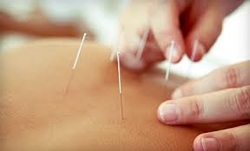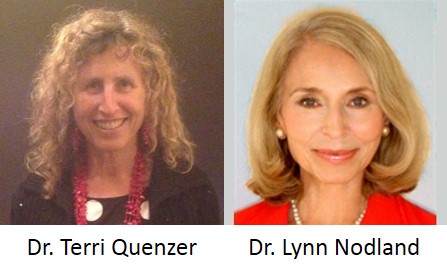
Minimally invasive compared to surgery and other procedures, acupuncture involves puncturing of the skin with small, thin needles. The principle of acupuncture is that stimulating specific acupuncture points corrects imbalances in the flow if qi (pronounced “chi”, natural energy or life force) through meridians (channels), according to traditional Chinese medicine.
There are 14 major meridians that form an invisible network connecting the body surface with the internal organs according to traditional Chinese theory. Acupuncture assumes that bodily functions are regulated by qi, which flows through the meridians.
Disease and pain are thought to be caused by imbalances or blockages in the flow of qi through the meridians. Acupuncture is believed to correct those imbalances by removing blockages and restoring the normal circulation of qi. To accomplish this, acupuncture points (acupoints) are stimulated by puncturing the skin with thin metal needles that are manipulated manually or by electrical stimulation.
Meridians are thought to connect to bodily organs, and acupoints are mainly, but not always, found along the meridians at specific locations. “Extraordinary” points are acupoints that are located outside of the meridians and are believed to have special therapeutic properties. “A-shi” points, which do not have fixed locations, represent tender or reflexive points that appear when there is pain.
There has been considerable variation in the actual number of acupoints over time. Initially there were thought to be 365 acupoints, symbolic of the number of days in the year and at one time believed to be the number of bones in the body. More recently, the total was believed to be 670. However, interest in ear acupuncture and treatment of other conditions has expanded that total.
Treatment is based on identifying and correcting problems in the body’s energy. Acupuncturists make a diagnosis by observing and questioning the patient in order to decide which points to treat.
The needles are usually made of stainless steel and typically disposable. Reusable needles may also be used and require sterilization between uses. The needles are typically about ½ - 5 inches (0.51 – 5.1 mm) in length and about 0.16 – 0.56 mm in diameter. Shorter needles are used around the face and eyes while longer needles are used in more fleshy areas. Thicker needles are used on more robust patients.
Acupuncture can be painful, and the skill level of the acupuncturist can determine whether or not needle insertion is painful. Skilled practitioners are more likely to insert needles with little or no pain.
Does acupuncture actually work? Scientific investigation of acupuncture has grown dramatically due to its popularity. Many new studies are reported on a weekly basis, and the results have been mixed. Part of the reason is that a double-blind placebo-controlled study is required to prove that a treatment is effective. This is a challenge for acupuncture due to the difficulty in designing a placebo-form of acupuncture. Another challenge is keeping participants and practitioners in the dark as to who is receiving real acupuncture and who is receiving fake acupuncture. Also, there is a very strong placebo effect caused by acupuncture that reduces the difference in results between the treatment and placebo groups.
The only time I’ve had acupuncture was last August after I twisted my knee and went to a traditional Chinese doctor (for more about that entire experience, go to http://www.bethehealthyu.com/1/post/2013/08/twisted-knee-meets-traditional-chinese-doctor.html). The doctor inserted several needles around my knee. I felt little pricks when the needles were inserted that were less intense than when I’ve had needles inserted to draw blood for blood tests. While I could feel it when the doctor manipulated the needles, it was not painful. Probably what fascinated me the most was when the doctor massaged my neck, upper back, and shoulders to remove blockages in my qi, I felt a tingling sensation around the needles in my knee when he worked certain spots. Somehow parts of my neck, upper back, and shoulders must be connected to my right knee or I would not have felt those sensations in my knee! Not only did my knee feel better following the treatment, it is now completely healed and I’m back to walking and running on it!
I would love to hear about your experiences with acupuncture. Has it helped you? Please leave a comment!
Resources
There are 14 major meridians that form an invisible network connecting the body surface with the internal organs according to traditional Chinese theory. Acupuncture assumes that bodily functions are regulated by qi, which flows through the meridians.
Disease and pain are thought to be caused by imbalances or blockages in the flow of qi through the meridians. Acupuncture is believed to correct those imbalances by removing blockages and restoring the normal circulation of qi. To accomplish this, acupuncture points (acupoints) are stimulated by puncturing the skin with thin metal needles that are manipulated manually or by electrical stimulation.
Meridians are thought to connect to bodily organs, and acupoints are mainly, but not always, found along the meridians at specific locations. “Extraordinary” points are acupoints that are located outside of the meridians and are believed to have special therapeutic properties. “A-shi” points, which do not have fixed locations, represent tender or reflexive points that appear when there is pain.
There has been considerable variation in the actual number of acupoints over time. Initially there were thought to be 365 acupoints, symbolic of the number of days in the year and at one time believed to be the number of bones in the body. More recently, the total was believed to be 670. However, interest in ear acupuncture and treatment of other conditions has expanded that total.
Treatment is based on identifying and correcting problems in the body’s energy. Acupuncturists make a diagnosis by observing and questioning the patient in order to decide which points to treat.
The needles are usually made of stainless steel and typically disposable. Reusable needles may also be used and require sterilization between uses. The needles are typically about ½ - 5 inches (0.51 – 5.1 mm) in length and about 0.16 – 0.56 mm in diameter. Shorter needles are used around the face and eyes while longer needles are used in more fleshy areas. Thicker needles are used on more robust patients.
Acupuncture can be painful, and the skill level of the acupuncturist can determine whether or not needle insertion is painful. Skilled practitioners are more likely to insert needles with little or no pain.
Does acupuncture actually work? Scientific investigation of acupuncture has grown dramatically due to its popularity. Many new studies are reported on a weekly basis, and the results have been mixed. Part of the reason is that a double-blind placebo-controlled study is required to prove that a treatment is effective. This is a challenge for acupuncture due to the difficulty in designing a placebo-form of acupuncture. Another challenge is keeping participants and practitioners in the dark as to who is receiving real acupuncture and who is receiving fake acupuncture. Also, there is a very strong placebo effect caused by acupuncture that reduces the difference in results between the treatment and placebo groups.
The only time I’ve had acupuncture was last August after I twisted my knee and went to a traditional Chinese doctor (for more about that entire experience, go to http://www.bethehealthyu.com/1/post/2013/08/twisted-knee-meets-traditional-chinese-doctor.html). The doctor inserted several needles around my knee. I felt little pricks when the needles were inserted that were less intense than when I’ve had needles inserted to draw blood for blood tests. While I could feel it when the doctor manipulated the needles, it was not painful. Probably what fascinated me the most was when the doctor massaged my neck, upper back, and shoulders to remove blockages in my qi, I felt a tingling sensation around the needles in my knee when he worked certain spots. Somehow parts of my neck, upper back, and shoulders must be connected to my right knee or I would not have felt those sensations in my knee! Not only did my knee feel better following the treatment, it is now completely healed and I’m back to walking and running on it!
I would love to hear about your experiences with acupuncture. Has it helped you? Please leave a comment!
Resources



 RSS Feed
RSS Feed